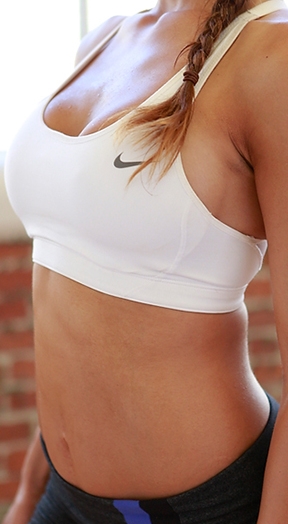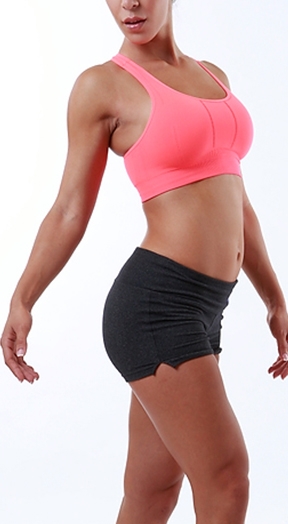Dr. John Griffin offers some of the most advanced cosmetic surgery procedures in the Bay Area at his San Mateo, CA practice. As an alternative to traditional breast implants and augmentation, for example, we are proud to offer fat grafting techniques to enhance the size and shape of the breasts. The procedure is also known as autologous fat transfer breast augmentation.
Dr. Griffin would like to consider some of the basics when it comes to fat transfer breast augmentation. We’ll compare the fat transfer procedure to traditional breast implants and let you know which one would be right for you.
How Fat Transfer Breast Augmentation Works
The principles behind fat transfer breast augmentation are simple.
First, liposuction is performed on part of the body with excess fat. Typically that means the abdominal area, the buttocks, the thighs, or the hips. This excess fat is then purified and prepped so it is ready for the next step of the process.
When the fat is ready, it is then injected into the breasts to help increase their volume and enhance their shape. The injections are carefully positioned to achieve the most natural enhancement results possible.
The Advantages of Fat Transfer Breast Augmentation
The key advantages of fat transfer breast augmentation are as follows:
- Fat Removal as Well as Breast Enhancement - With a fat transfer breast augmentation, patients experience the benefits of two different surgical procedures. The breast are enhanced, and parts of the body that need some fat removal can be treated for a slimmer, trimmer frame.
- No Need for Major Breast Augmentation Incisions - During traditional augmentation with implants, incisions are often located on the breasts themselves. With a fat transfer breast augmentation, the incisions for the liposuction are usually no larger than 4mm. There will be no major incisions or lasting scars from the injection of the purified fat into the breasts.
- Low Rates of Complications - Since a patient’s own body fat is used rather than implants, there is a much lower rate of complications and serious side effects. Patient satisfaction with the procedure tends to be high.
The Disadvantages of Fat Transfer Breast Augmentation
The key disadvantages of fat transfer breast augmentation are as follows:
- May Not Be an Option for Lean Patients - Since excess body fat is necessary for the procedure, patients who have very little excess body fat will generally not qualify for the surgery.
- Limits on Size Enhancement - With fat transfer breast augmentation, a patient will only be able to experience about one cup size of enhancement overall. This is due to the limited amount of fat that can be injected into the breasts for ideal results.
- Fat Reabsorption - Some body fat will be reabsorbed into the body naturally and harmlessly after a fat transfer procedure. This can affect the results of surgery and could require a touch up at a later point.
- No Lifting Benefits - Fat transfer breast augmentation will not provide the lifting benefits that saline or silicone breast implants do. This is important to consider for women with sagging breasts.
Helping You May the Right Choice for Your Needs
Deciding between traditional breast augmentation and a fat transfer augmentation can be challenging. That’s why we’ll discuss these matters with you during a consultation. We can use 3D imaging to see the results of breast augmentation surgery before we perform. Knowing the outcomes ahead of time allow patients to make an informed choice about their surgical options.
Learn More About Your Breast Augmentation Options
If you would like to learn more about breast augmentation and whether or not it’s the right option for you, be sure to contact a board-certified plastic surgeon. We are proud to serve the Bay Area and achieve excellent results for our patients.





